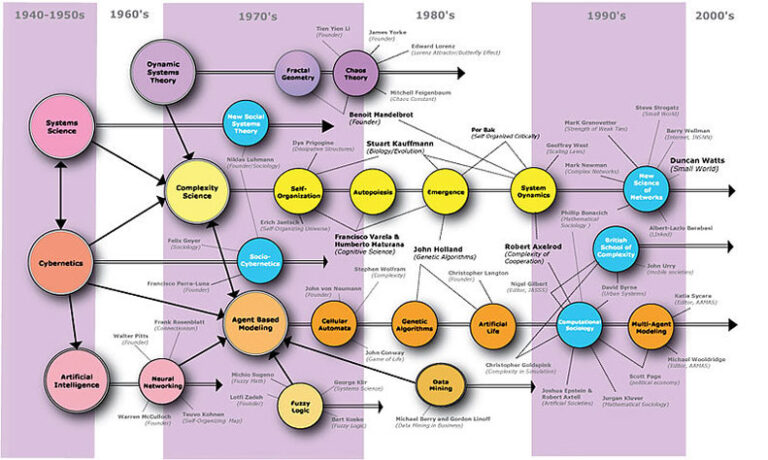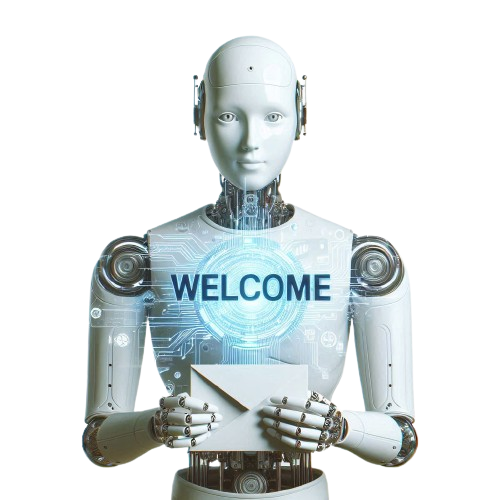What are Large Language Models (LLMs)
Table of Contents
The most popular Large Language Models nowadays are: GPT by OpenAI Gemini by Google Llama 3 by Meta Claude 3 by Anthropic Grok by xAI
Large language models, or LLMs, are a type of artificial intelligence (AI) rapidly transforming how we interact with computers. These advanced models can understand and generate human language with remarkable sophistication.
This article explores everything you need to know about LLMs, answering key questions:
- What exactly are LLMs and what can they do?
- How do these complex systems work behind the scenes?
- What exciting applications do LLMs have in the real world?
- What does the future hold for this rapidly evolving technology?
Popular Large Language Models
| LLM | Developer | Popular apps that use it |
| GPT | OpenAI | Microsoft, Duolingo, Stripe, Zapier, Dropbox, ChatGPT |
| Gemini | Gemini chatbot, some features on other Google apps like Docs and Gmail | |
| Llama 3 | Meta | AI features in Meta apps, Meta AI chatbot |
| Claude 3 | Anthropic | Slack, Notion, Zoom |
| Grok | xAI | Grok Chatbot |
The Power of Large Language Models
LLMs are transforming how we use computers by enabling them to process and generate human language in new ways. Here are some of their core functionalities:
- Text Generation: LLMs can create realistic and coherent text formats, from writing emails and letters to composing poems or even scripts.
- Machine Translation: LLMs are breaking down language barriers by translating between languages with impressive accuracy.
- Question Answering: Got a question? LLMs can analyze massive amounts of information and provide insightful answers, making them a powerful research and learning tool.
- Text Summarization: Need to quickly grasp the key points of a lengthy text? LLMs can condense long pieces of text into concise summaries, saving you time and effort.
It’s important to distinguish LLMs from other AI models like rule-based chatbots. While chatbots rely on pre-programmed responses, LLMs can learn and adapt. Their ability to continuously improve stems from being exposed to vast amounts of data, allowing them to understand and generate more nuanced language.
How Large Language Models Work
Large language models (LLMs) might seem like magic, but understanding how they work can be broken down into simpler ideas. This section explores the core technology and training process that allows LLMs to perform their impressive feats.
Neural Networks
At the heart of every LLM lies a complex system called a neural network. Inspired by the structure of the human brain, neural networks are made up of interconnected nodes that process information.
Think of these nodes like tiny computers working together to learn and recognize patterns. Here’s a simple analogy: Imagine a group of friends working on a puzzle together.
Each friend (a node) receives a piece of the puzzle and communicates with the others to figure out where it fits. As they work together repeatedly, they get better at recognizing patterns and solving puzzles faster.
In a similar way, neural networks in LLMs process information, learn from patterns in massive datasets of text and code, and improve their ability to understand and generate language.
The Training Process
LLMs don’t magically know how to understand language. They are trained on massive amounts of text data, like books, articles, and code. This data is fed into the neural network, and the LLM learns to identify patterns and relationships between words. There are two main methods used to train LLMs:
Supervised Learning: In this method, the LLM is given both the input (text) and the desired output (correct translation, answer to a question). By comparing its generated responses with the desired output, the LLM constantly refines its understanding and improves its accuracy.
Unsupervised Learning: Here, the LLM is exposed to vast amounts of text data without any specific instructions. The LLM analyzes the data to find patterns and relationships between words on its own. This method helps LLMs learn the nuances of language and generate more creative text formats.
Still under development
It’s important to remember that LLMs are still under development. While they’ve achieved impressive results, they can still face challenges:
- Data Bias: If the training data is biased, the LLM can inherit those biases and generate biased outputs.
- Factual Accuracy: LLMs are good at mimicking language patterns, but they may not always understand the true meaning or factual accuracy of the information they process.
These are important areas of ongoing research, and developers are constantly working to improve the training process and address these limitations.
Applications of Large Language Models

Large language models (LLMs) are no longer confined to research labs. Their capabilities are finding their way into many real-world applications, changing how we use language to interact with technology and information. Let’s explore some of the exciting ways LLMs are being used today.
Content Creation
Content creation is a time-consuming task. LLMs are offering a helping hand by automating some aspects of the process. Here’s how:
- Generating Content Ideas: Struggling with writer’s block? LLMs can help brainstorm content ideas and suggest topics relevant to your audience.
- Writing Different Formats: Need to write a blog post, social media caption, or even a product description? LLMs can generate different creative text formats based on your input and desired style.
- Improving Writing Efficiency: LLMs can help with tasks like proofreading and editing, saving you time and ensuring your content is polished.
It’s important to remember that LLMs are tools, and human oversight remains crucial. They can’t replace the creativity and critical thinking needed for high-quality content. However, LLMs can be a valuable asset for content creators, boosting efficiency and productivity.
Machine Translation
Imagine being able to communicate and access information in any language. LLMs are making this dream a reality by powering advanced machine translation tools. Here’s how they’re changing the game:
- More Accurate Translations: LLMs are trained on massive amounts of text data in multiple languages. This allows them to understand the nuances of different languages and produce translations that are more natural and accurate than traditional methods.
- Breaking Down Communication Silos: With LLMs, language barriers are no longer a hurdle. Businesses can communicate with customers and partners globally, and researchers can access information from around the world.
Machine translation powered by LLMs is still under development, but it’s constantly improving. This technology has the potential to connect people and cultures in unprecedented ways.
Chatbots
Customer service is undergoing a transformation thanks to chatbots powered by LLMs. These chatbots can handle a wide range of tasks, providing a more efficient and convenient user experience. Here are some benefits:
- 24/7 Availability: Unlike human representatives, chatbots are available around the clock to answer questions and address customer concerns.
- Faster Response Times: No more waiting on hold! LLMs can process information and respond to inquiries quickly, improving customer satisfaction.
- Handling Simple Tasks: Chatbots can answer frequently asked questions, resolve basic issues, and even schedule appointments, freeing up human agents for more complex tasks.
While LLMs are making chatbots more sophisticated, it’s important to note that they still have limitations. For complex issues, human interaction may still be necessary.
Other Applications
The potential applications of LLMs extend far beyond the areas mentioned above. Here’s a glimpse into some exciting possibilities:
- Education: LLMs can personalize learning experiences, create interactive study materials, and even provide feedback on student writing.
- Healthcare: LLMs can analyze medical data to assist with diagnosis and treatment planning, or even help generate reports and summaries.
- Scientific Research: LLMs can analyze vast amounts of scientific data to identify patterns and accelerate research breakthroughs.
As LLM technology continues to develop, we can expect even more innovative applications to emerge in various fields.
The Future of Large Language Models
Large language models (LLMs) are a rapidly evolving field, and the future holds exciting possibilities. Here, we’ll explore what’s on the horizon for LLMs, along with some of the challenges that need to be addressed.
Expected Advancements
As LLM technology continues to develop, we can expect to see improvements in several areas:
- Better Reasoning: LLMs are getting better at understanding the context of language and making logical inferences. This will allow them to handle more complex tasks and generate more nuanced responses.
- Improved Factual Accuracy: Researchers are working on ways to ensure LLMs understand the true meaning and factual accuracy of information. This will make them a more reliable source for information retrieval.
- Understanding Complex Contexts: LLMs are becoming more adept at understanding the subtleties of human language, including humor, sarcasm, and emotions. This will allow them to interact with people in a more natural way.
- More Human-Like Interactions: In the future, LLMs might become more human-like in their interactions, carrying on conversations that are indistinguishable from those with a real person.
These advancements hold immense potential for various applications, from creating more engaging chatbots to changing the way we search for information.
This article has provided a comprehensive overview of large language models (LLMs). From understanding how they work to exploring their real-world applications and future potential, LLMs are poised to significantly impact how we interact with technology and information in the years to come.




